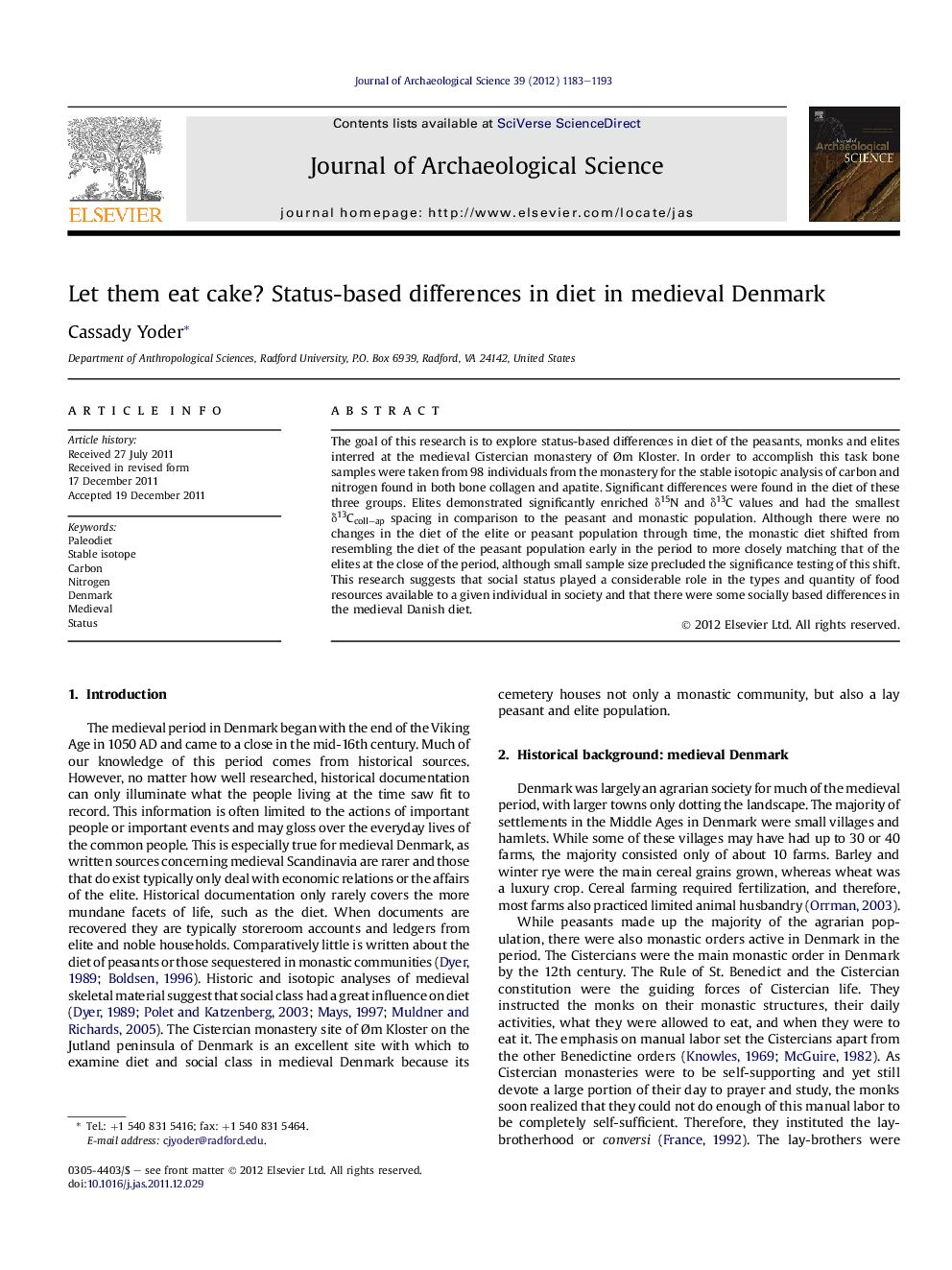| Article ID | Journal | Published Year | Pages | File Type |
|---|---|---|---|---|
| 1035608 | Journal of Archaeological Science | 2012 | 11 Pages |
The goal of this research is to explore status-based differences in diet of the peasants, monks and elites interred at the medieval Cistercian monastery of Øm Kloster. In order to accomplish this task bone samples were taken from 98 individuals from the monastery for the stable isotopic analysis of carbon and nitrogen found in both bone collagen and apatite. Significant differences were found in the diet of these three groups. Elites demonstrated significantly enriched δ15N and δ13C values and had the smallest δ13Ccoll–ap spacing in comparison to the peasant and monastic population. Although there were no changes in the diet of the elite or peasant population through time, the monastic diet shifted from resembling the diet of the peasant population early in the period to more closely matching that of the elites at the close of the period, although small sample size precluded the significance testing of this shift. This research suggests that social status played a considerable role in the types and quantity of food resources available to a given individual in society and that there were some socially based differences in the medieval Danish diet.
► Examined status-based dietary differences at a medieval site using stable isotopes. ► Elite diet was significantly richer in proteins than the peasant or monastic diet. ► Elite and peasant diets did not change through time. ► Monastic diet became richer in proteins through time. ► Indicates that there were status-based differences in diet in medieval Denmark.
